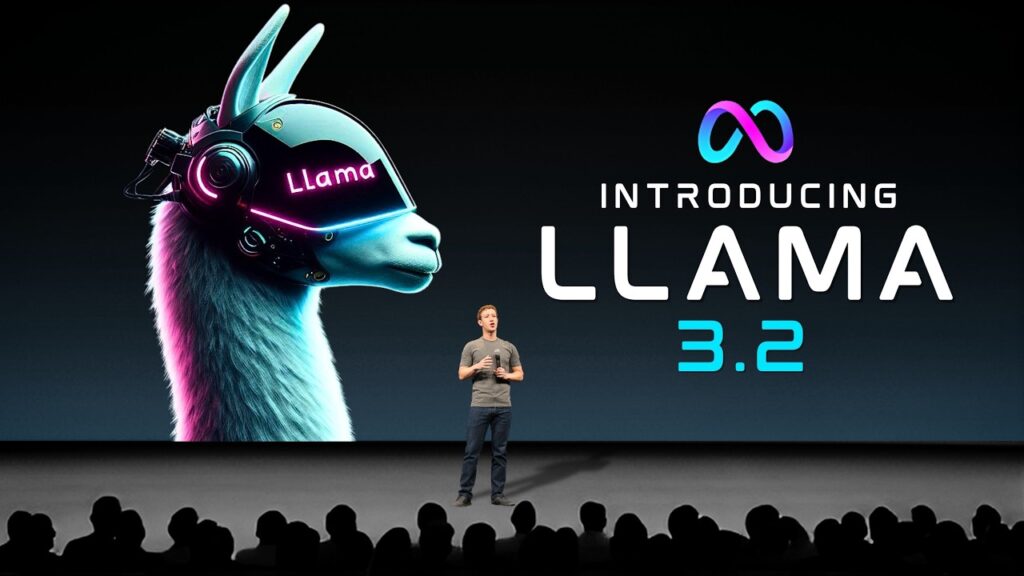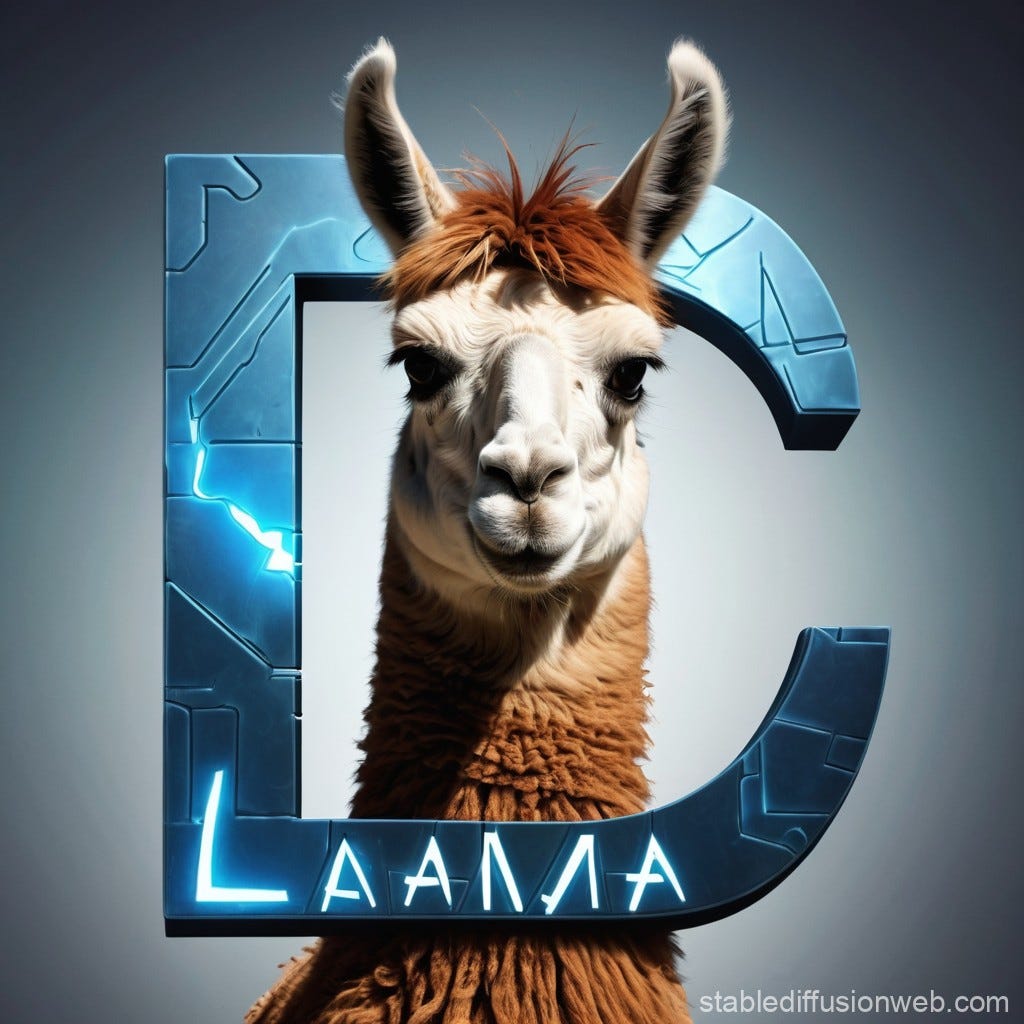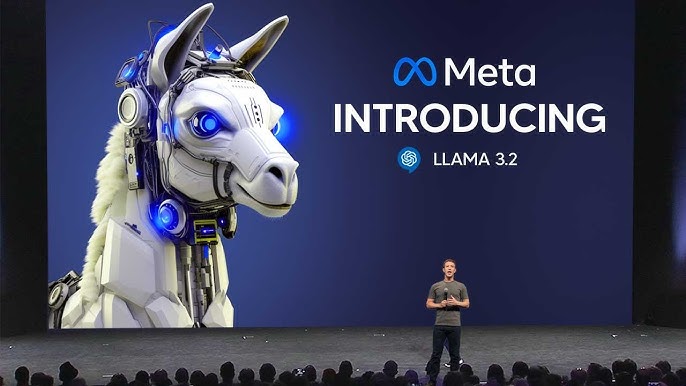Llama 3.2: A Significant Advance in Edge AI and Vision
Meta’s Llama 3.2 represents a substantial leap forward in the realm of large language models (LLMs), particularly for edge AI and vision applications. This open-source model offers several key advantages:
- Lightweight and Efficient: Available in small and medium sizes, Llama 3.2 is optimized for deployment on edge devices and mobile platforms. This enables real-time AI applications without relying on cloud infrastructure.
- Vision Capabilities: The model incorporates vision LLMs that can process and understand images, enabling tasks like image recognition, visual question answering, and image generation.
- Open and Customizable: Its open-source nature allows developers to tailor the model to specific needs, fostering innovation and the creation of specialized AI solutions.
- State-of-the-Art Performance: Llama 3.2 demonstrates impressive performance on various benchmarks, including text-based tasks like summarization and instruction following, as well as vision-based tasks.


The implications of Llama 3.2 are far-reaching:
- Edge AI Revolution: By enabling powerful AI applications to run locally on devices, Llama 3.2 reduces latency and enhances privacy. This opens up new possibilities for smart devices, autonomous systems, and other edge AI applications.
- Democratizing AI: The open-source nature of Llama 3.2 lowers the barrier of entry for AI development, empowering a wider range of developers and organizations to leverage AI technology.
- Advanced Vision Applications: The vision capabilities of Llama 3.2 enable innovative applications in fields like healthcare, autonomous vehicles, and robotics.
A Leap in Edge AI
Imagine a world where your smartphone can instantly translate a conversation, identify objects in real-time, or even summarize long documents—all without needing an internet connection. Llama 3.2 brings us closer to this reality by making advanced AI tasks possible on mobile and edge devices. Traditionally, large language models (LLMs) and AI tasks would require extensive cloud computing resources due to their size and computational demands. However, Llama 3.2’s smaller models (ranging from 1B to 90B parameters) have been fine-tuned to run efficiently on local hardware such as Qualcomm and MediaTek processors.
This means AI can be deployed in areas where internet connectivity is poor or unreliable. By processing data locally, these models also enhance data security and privacy, as sensitive information doesn’t need to leave the user’s device. This is particularly valuable for industries like healthcare, finance, and personal devices, where data confidentiality is paramount.


Multimodal Mastery: Text and Vision Integration
Llama 3.2 isn’t just about text-based tasks; it also brings robust visual comprehension to the table. Think of it as an AI that can read and “see” at the same time. For instance, it can analyze an image and understand textual context simultaneously, making it possible to interact with complex data such as charts, diagrams, or scanned documents. This could revolutionize fields like education, where students can engage with multimedia content through interactive AI tutors, or in logistics, where AI can read and process visual data like shipping labels and inventory lists in real-time.
In terms of benchmarks, Llama 3.2’s vision models excel at tasks such as document visual question answering (DocVQA) and chart comprehension (ChartQA), often outperforming other advanced models in these categories. This positions Llama 3.2 as a leading choice for hybrid tasks where language and vision intertwine, paving the way for more natural and efficient human-computer interactions
Customization and Adaptability
What makes Llama 3.2 particularly revolutionary is its open, customizable nature. Unlike some proprietary AI models that come pre-packaged with limited customization options, Llama 3.2 invites developers to fine-tune and extend its capabilities to fit unique use cases. This is enabled by Meta’s Torchtune framework, which facilitates fine-tuning across different models, making it easy to integrate specialized training data. Imagine a Llama 3.2 model fine-tuned to understand medical terminology for healthcare applications or trained to recognize industry-specific jargon for legal document processing—developers have the flexibility to tailor the model to virtually any field.
The open-source nature of Llama 3.2 also democratizes AI, allowing businesses of all sizes, research institutions, and independent developers to leverage cutting-edge technology without incurring massive costs associated with proprietary systems. This fosters innovation and widens access to powerful AI capabilities, fueling a more diverse AI ecosystem.


Safety and Ethical AI
Llama 3.2 doesn’t just stop at performance; it also addresses safety and ethical concerns. The model includes a built-in safeguard system known as Llama Guard 3, which monitors input and output for harmful content, ensuring AI is used responsibly. This is crucial in a world where AI-generated content can easily be used to mislead or cause harm. Llama Guard 3 functions like a vigilant gatekeeper, filtering content and warning users if the generated responses or instructions could be misinterpreted or pose risks.
Intelligent Efficiency: Pruning and Distillation
To achieve its lightweight yet powerful performance, Llama 3.2 employs techniques like pruning and distillation. Pruning systematically reduces model complexity by eliminating redundant parameters, while distillation involves training smaller “student” models to mimic the behavior of larger “teacher” models. These techniques enable the 1B and 3B parameter models to retain high accuracy while running on lower-powered devices. Imagine training an athlete to maintain top performance while shedding excess weight—that’s essentially what these optimization methods accomplish for Llama 3.2.
By optimizing for efficiency without sacrificing quality, Llama 3.2 enables edge devices to perform tasks that previously required powerful servers. This not only reduces costs but also makes AI more accessible for everyday applications like real-time language translation, augmented reality, and voice-activated assistants


Vision for the Future
With Llama 3.2, the future of AI is not only in the cloud but also in your pocket, on factory floors, and in rural clinics. Its ability to operate independently of the cloud means it can bring advanced capabilities to places where traditional AI solutions fall short. As the technology continues to evolve, we can expect even more sophisticated versions that blend language, vision, and perhaps even other sensory inputs, creating AI that interacts with the world in a more human-like manner.
In summary, Llama 3.2 is revolutionizing edge AI by making advanced capabilities accessible on smaller devices. Its open and customizable architecture, combined with strong vision capabilities and safety features, positions it as a versatile solution for a wide range of applications—from personal use to industrial automation.

